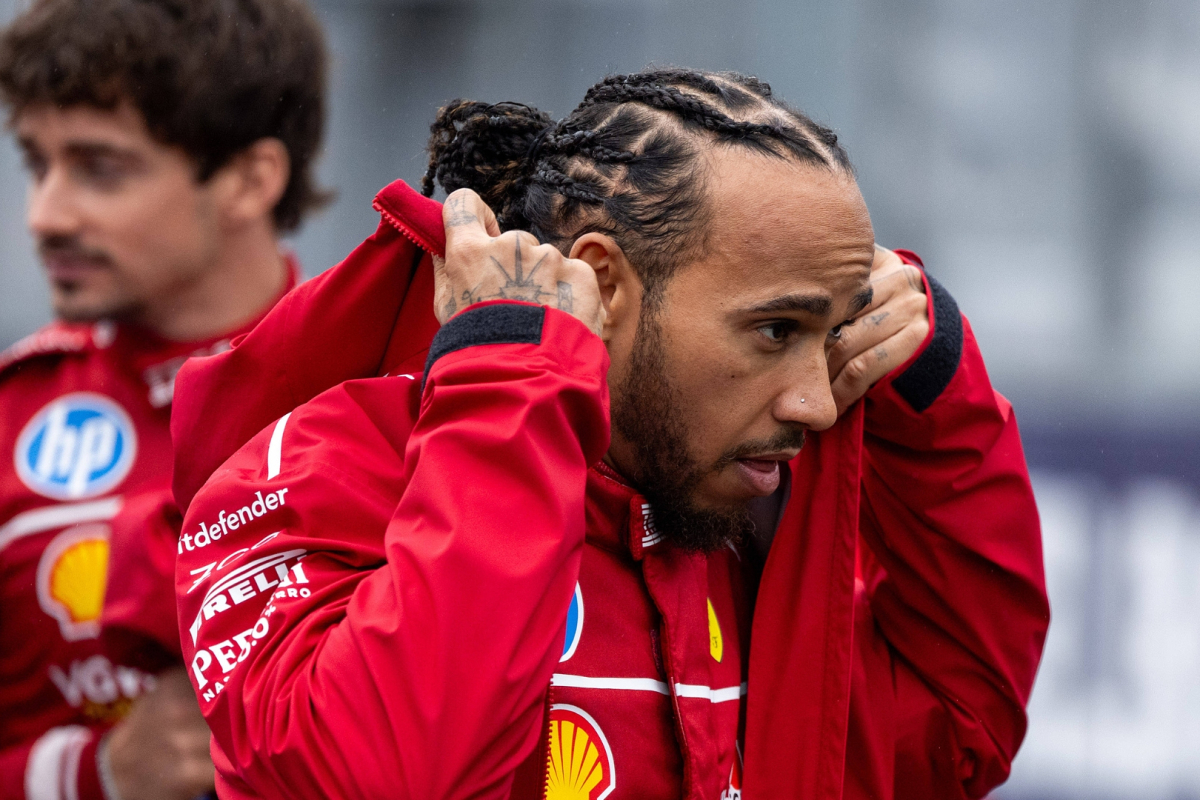Breaking: Lewis Hamilton learns Saudi Arabian GP penalty fate after ‘dangerous…read more
Lewis Hamilton narrowly avoided a penalty following an incident during the second free practice session (FP2) at the Saudi Arabian Grand Prix, held at the high-speed Jeddah Corniche Circuit. The seven-time world champion was summoned to the stewards after being accused of blocking Williams driver Alex Albon at Turn 17 during a hot lap. Although Albon initially labeled the move as “dangerous” over team radio, no further action was taken by the FIA following a thorough review.
The incident occurred as Hamilton was navigating the tight and twisty sections of the Saudi circuit. As he approached Turn 17, Albon came up behind him on a flying lap and was forced to take evasive action to avoid a potential collision. The move startled the Thai driver, who immediately reported the situation to his team, calling it a “dangerous” block.
In response, the FIA called both drivers and their respective teams to a hearing after the session. After reviewing the telemetry, video footage, marshalling data, timing information, and listening to both team radios, the stewards acknowledged that Hamilton had indeed unnecessarily impeded Albon. However, the context of the situation and Albon’s own remarks during the hearing contributed significantly to the decision not to impose a penalty.
The official statement from the FIA detailed the findings of the hearing. “The Stewards heard from the driver of Car 44 (Lewis Hamilton), the driver of Car 23 (Alexander Albon), team representatives and reviewed positioning/marshalling system data, video, timing, telemetry, team radio and in-car video evidence and determined that Car 44 unnecessarily impeded Car 23 during Practice 2 at Turn 17.”
Interestingly, during the meeting, Albon clarified that although he had initially called the incident dangerous, his perspective changed after reviewing the footage. He admitted that he had full control of his car throughout the situation and did not believe it warranted a penalty in hindsight. “He [Albon] had seen Car 44 in front of him during the corner before,” the FIA report added. “However, he did not expect Car 44 to be in that particular position on the track. That unexpected positioning caught him by surprise, causing him to take evasive action at Turn 17.”
Albon’s later admission that the situation was not as severe as it initially seemed played a crucial role in the decision. Both drivers were ultimately aligned in their assessment that, while there was a misjudgment in positioning, the incident did not present a serious danger.
This outcome meant Hamilton retained a clean record for the session, which is a relief for Mercedes as they look to improve their performance during a challenging season. Avoiding a grid penalty or reprimand helps maintain momentum, especially on a street circuit like Jeddah where overtaking opportunities are limited.
Elsewhere on the Friday practice front, there was no shortage of action and drama. Formula 2 driver Gabriel Bortoleto was forced to change the chassis of his car due to an oil leak. The unexpected technical issue resulted in a delay and added extra pressure on the young driver ahead of the weekend’s racing activities.
Additionally, Aston Martin’s Lance Stroll had a dramatic moment of his own during the early part of the FP2 session. The Canadian driver lost control of his car at Turn 1, spinning out and narrowly avoiding the barriers. Quick reflexes allowed Stroll to steer his vehicle off the racing line and bring it to a safe stop, preventing what could have been a session-ending crash. Despite the spin, Stroll and his team managed to recover and continue the session without further incident.
The Saudi Arabian Grand Prix weekend is already shaping up to be full of intrigue, with tight margins and high stakes as teams continue to adapt to the challenging Jeddah circuit. While Hamilton avoided punishment this time, the stewards’ decision highlights the fine line drivers must walk during high-speed practice sessions on narrow street circuits. One misstep, intentional or not, can lead to tense radio messages, investigations, and potential penalties.
As teams prepare for qualifying and the main race, all eyes will remain on how drivers handle the intensity of Jeddah’s high-speed layout, where timing and track awareness are crucial—and sometimes, even a split-second hesitation can lead to dramatic consequences.



